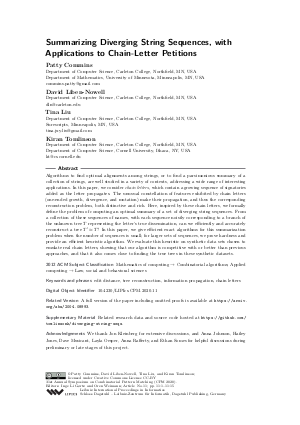LIPIcs.CPM.2020.11.pdf
- Filesize: 0.64 MB
- 15 pages

 Creative Commons Attribution 3.0 Unported license
Creative Commons Attribution 3.0 Unported license














































Feedback for Dagstuhl Publishing